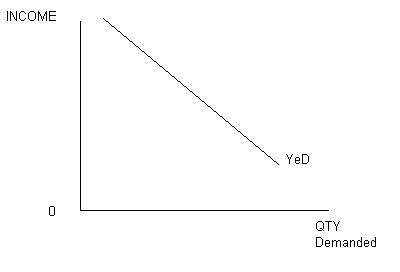Chapter: Engineering Economics and Financial Accounting : Demand and Supply Analysis
Elasticity of Demand
ELASTICITY OF DEMAND
If price
rises by 10% - what happens to demand? We know demand will fall
By more than
10%?
By less
than 10%?
Elasticity
measures the extent to which demand will change
Elasticity
is the ratio of the percent change in one variable to the percent change in
another variable. It is a tool for measuring the responsiveness of a function
to changes in parameters in a unit-less way. Frequently used elasticities
include price elasticity of demand, price elasticity of supply, income
elasticity of demand, elasticity of substitution between factors of production
and elasticity of intertemporal substitution
1. PRICE ELASTICITY OF DEMAND
Price
elasticity of demand measures the percentage change in quantity demanded caused
by a percent change in price. As such, it measures the extent of movement along
the demand curve. This elasticity is almost always negative and is usually
expressed in terms of absolute value. If the elasticity is greater than 1
demand is said to be elastic; between zero and one demand is inelastic and if
it equals one, demand is unit-elastic.
E= Proportionate change in qty demanded of good
x / Proportionate change in price of good x
Calculating
the Percentage Change in Quantity Demanded
The
formula used to calculate the percentage change in quantity demanded is:
[QDemand(NEW)
- QDemand(OLD)] / QDemand(OLD)
Calculating
the Percentage Change in Price
Similar
to before, the formula used to calculate the percentage change in price is:
[Price(NEW)
- Price(OLD)] / Price(OLD)
PEoD = (%
Change in Quantity Demanded)/(% Change in Price)
ELASTIC
DEMAND - a change in price, results in a greater than proportional change in
the quantity demanded ED>1.
INELASTIC
DEMAND - a change in price results in a less than proportional change ED<1.
UNITARY
DEMAND - a change in price results in n equal proportional change ED=1.
PERFECTLY
ELASTIC DEMAND - demand changes even when price remains unchanged. ED= ![]()
![]()
PERFECTLY
INELASTIC DEMAND - change in price does not result in any change.
ED=0
2. Income elasticity of demand
Income
elasticity of demand measures the percentage change in demand caused by a
percent change in income. A change in income causes the demand curve to shift
reflecting the change in demand. YED is a measurement of how far the curve
shifts horizontally along the X-axis. Income elasticity can be used to classify
goods as normal or inferior. With a normal good demand varies in the same
direction as income. With an inferior good demand and income move in opposite
directions.(Represented by 'YED')[2]
The
Income Elasticity of Demand: responsiveness of demand to changes in incomes
A
positive sign denotes a normal good
A
negative sign denotes an inferior good
MEASURING THE INCOME ELASTICITY
Income
elasticity of demand (Yed) measures the relationship between a change in
quantity demanded and a change in real income
Yed = % change in demand
% change
in income
TYPES OF INCOME ELASTICITY
POSITIVE INCOME ELASTICITY
A rise in
income will cause a rise in demand
A fall in
income will cause a fall in demand
NEGATIVE INCOME ELASTICITY
An
increase in income will result in a decrease in demand.
A
decrease in income will result in a rise in demand.
ALSO
known as INFERIOR GOODS
Diagram
of negative income elasticity

ZERO INCOME ELASTICITIES
This
occurs when a change in income has NO effect on the demand for goods.
A rise of
5% income in a rich country will leave the Demand for toothpaste unchanged
3. Cross Elasticity:
The
responsiveness of demand of one good to changes in the price of a related good
– either a substitute or a complement
In
economics, the cross elasticity of demand or cross-price elasticity of demand
measures the responsiveness of the demand for a good to a change in the price
of another good.
It is
measured as the percentage change in demand for the first good that occurs in
response to a percentage change in price of the second good. For example, if,
in response to a 10% increase in the price of fuel, the demand of new cars that
are fuel inefficient decreased by 20%, the cross elasticity of demand would be −20%/10%
= −2.
Related Topics